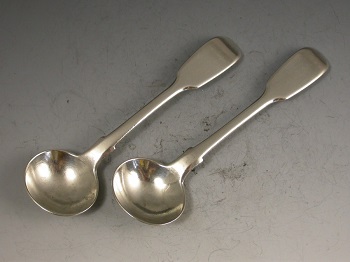
How to research Cape Silversmiths
Researching Cape Silversmiths can be an engaging process that involves exploring various resources. Here are some steps you can follow to conduct research on Cape Silversmiths:
- Start with books and publications: Look for books, journals, and publications that focus on silverware, decorative arts, or South African craftsmanship. Check libraries, both physical and online, for relevant literature. Some recommended titles include:
- “Cape Silver and Silversmiths” by Stephan Welz and Shirley Battersby
- “Cape Silver: 17th-19th Century Silver and Copper from the Cape” by David Heller
- “Cape Silver and Silversmiths: The Work of Twenty-Two Cape Silversmiths” by Richard O. Day
- “Cape Silver: A Comprehensive History of Silversmithing in Cape Town and the Transvaal” by Patrick Goss
- Visit museums and exhibitions: Museums often showcase collections of silverware, including pieces crafted by Cape Silversmiths. Local museums, historical societies, or art galleries in South Africa may have exhibitions dedicated to silverware or South African craftsmanship. Explore their collections or visit special exhibits to study Cape Silver pieces firsthand.
- Explore online resources: Utilize online databases, archives, and websites dedicated to South African history, art, and decorative arts. Some useful resources include:
- South African Silver Institute: A resource dedicated to the study and preservation of South African silverware.
- South African National Museum of History: Their online collections may have information on Cape Silversmiths and related artifacts.
- Digital repositories: Websites like the South African History Archive or Digital Collections of the University of Cape Town may contain archival documents, photographs, and other resources relevant to Cape Silversmiths.
- Connect with experts and collectors: Reach out to historians, curators, antique dealers, or collectors who specialize in South African silverware. They may have valuable insights, resources, or recommendations for further research. Consider attending conferences, seminars, or workshops related to silverware or South African craftsmanship to network with experts in the field.
- Consult auction catalogs and sales records: Auction houses often handle antique silverware and may have catalogs or sales records that feature Cape Silver pieces. Studying these catalogs can provide information about specific silversmiths, their works, and their historical context.
- Join online communities and forums: Engage with online communities or forums focused on silverware, antiques, or South African history. Participating in discussions or asking questions can lead to valuable information, connections, or recommendations for further research.



Cape Silversmiths refer to the silversmiths who worked in the Cape of Good Hope, which is located in present-day South Africa. The term is often used to describe the silversmiths who operated during the 18th and 19th centuries in the Cape Colony.
During this period, Cape Silversmiths produced a wide range of silverware, including tableware, cutlery, decorative items, and personal accessories. The silverware crafted by Cape Silversmiths reflected the styles and influences of the time, which included elements from Dutch, English, and Cape Malay cultures.
One prominent feature of Cape Silver is the use of Cape Dutch engraving, a technique that involved intricate and detailed hand-engraved designs. These designs often incorporated botanical motifs, indigenous wildlife, and local scenes. Cape Silver is known for its fine craftsmanship and the use of high-quality silver.
List of Famous Cape Silversmiths
- Johannes Combrink (Active in the late 18th century)
- Andreas Gruge (Active in the late 18th century)
- Johann Voigt (Active in the late 18th century)
- Johann Friedrich Kuhne (Active in the late 18th century)
- Johannes Martinus Lotter (Active in the late 18th century)
- Jan Lotter (Active in the late 18th century)
- Hermanus Myburgh (Active in the early 19th century)
- George Hendrik Lotter (Active in the early 19th century)
- Johann Christoph Ehrlich (Active in the early 19th century)
- Gabriel Johannes Bezuidenhout (Active in the early 19th century)
Notable Cape Silversmiths include
- Gerhardus Lotter: He was a prominent silversmith who worked in Cape Town during the late 18th and early 19th centuries. Lotter’s work is known for its elegant designs and exceptional craftsmanship.
- Johannes Hendrikus Schmidt: Schmidt was a renowned Cape Silversmith who operated during the early 19th century. His work often featured intricate engraved patterns and delicate details.
- Daniel Heinrich Augustus Schutte: Schutte was a Cape Silversmith who worked during the early 19th century. His pieces are known for their distinctive floral and vine motifs.
- Johannes Combrink: Combrink was an influential Cape Silversmith who operated during the mid-19th century. His work showcased a fusion of traditional Cape Dutch designs with Victorian influences.
It’s worth noting that Cape Silver pieces are highly sought after by collectors due to their historical significance and craftsmanship. Museums, auction houses, and antique dealers often feature Cape Silver items in their collections.
If you’re interested in researching Cape Silversmiths further, I recommend exploring museum collections and exhibits, historical archives, auction catalogs, and books on South African silverware and craftsmanship. Additionally, contacting local experts, antique dealers, or historians specializing in South African decorative arts could provide valuable insights and resources.
Also see: A guide to reading Silver Hallmarks
How to Research Cape Silversmiths
Leave a Reply